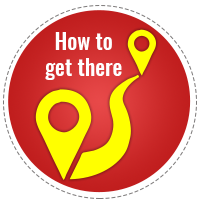Gender variety things for a number of reasons. First, a far more workforce that is diverse the worldwide relations sector better reflects Australia’s culture all together. 2nd, it broadens the people protection of this sector and so boosts its skill pool. Third, gender balance in a workforce has other extremely perceptible advantages: it produces a broader selection of some ideas and experiences, results in greater productivity, more innovation and better decision-making,24 and offers a more positive and workforce that is healthier.
You will find, but, a variety of administration studies and studies throughout the personal sector that have actually produced an amazing human anatomy of proof in the advantages of better sex stability in workforces. The data shows that sex variety in organisational leadership offers a wider selection of knowledge, tips, and abilities which can be of quantifiable advantage to organisations.25 There is certainly evidence that is strong increasing gender balance in personal sector organisations also creates measurable and significant improvements inside their monetary performance.26 As an example, significant studies done by McKinsey, Credit Suisse, Deloitte, together with Peterson Institute for Global Economics in past times decade have got all shown that the larger the percentage of females in senior management, the higher the go back to investors.27
The data additionally cautions against putting a lot of increased exposure of ‘trailblazers’: in reality, having more females over the breadth of a organisation’s senior leadership seems to have a more impressive effect than having a female regarding the board or whilst the CEO. The correlation between more feminine professionals and greater profits “underscores the significance of developing a pipeline of feminine supervisors and not getting lone ladies to your top”.28
There isn’t any reasons why some great benefits of better diversity, so comprehensively demonstrated into the business sector, aren’t equally applicable to workforces asian wife when you look at the general public sector. Whilst the body of research undertaken especially in the sector that is public smaller, some crucial findings have actually emerged. There is certainly proof that the sex composition of policymaking institutions affects the decision of dilemmas to handle as well as the concern directed at those problems. For instance, women can be almost certainly going to see the total involvement of females and girls in society as an essential international policy objective.29 Feminine legislators promote greater supply of feminine health services,30 and tend to be more prone to vote and advocate for women’s issues.31 A 2014 research of male and female economists in the usa unearthed that women and men differed commonly in the importance they mounted on policy issues concerning sex such as the wage space and equal opportunity.32 There was a danger consequently that policies certain to women’s passions are over looked without more gender that is equal among policymakers.
A far more diverse workforce is a more capable workforce — a place that’s been created by many senior officials over the Australian worldwide relations sector.33 An evaluation in to the remedy for feamales in the Australian Defence Force (ADF) discovered that variety in leadership ended up being vital to capability and led to more problem-solving that is effective.34 There is certainly some proof that gender-balanced groups may produce more effective results.35
Breakdown of the information
Gender balance within the senior administrator solution amounts
Analysis of employment information across Australia’s 14 international-facing divisions and agencies shows there has been some progress in righting gender imbalances within the last two decades, however the rate of change happens to be sluggish, plus the progress uneven.
Females currently lead 2 regarding the 1436 internationally concentrated departments and agencies when you look at the research test. Until June 2016 whenever Frances Adamson had been appointed Secretary of DFAT, that quantity had been zero. Secretary Adamson’s appointment had been accompanied by compared to Stephanie Fahey as mind of Austrade in 2017 january.
The sector’s proportion of female leaders falls well below the rate across Commonwealth departments generally (in which 9 of 18 leaders are women, or 50 per cent) and across public sector agencies as a whole (where just under one-third are women) despite these recent appointments.37
APSED tiered outcomes, 1996-2018
Australian Public provider Employment Database; information supplied by relevant departments/agencies, departmental reports that are annual 2017 Intelligence Review.
Within their senior administrator solution (SES levels 1–3), every one of the government divisions and agencies inside our research test, apart from the Attorney-General’s Department and PM&C, autumn underneath the 2017–18 APS average of 45 % ladies in their senior administration.38 Some, especially in the defence and cleverness agencies, fall considerably below that figure. Around one fourth of SES jobs within the cleverness agencies take place by ladies, 29 % at ONA (up from 9 per cent because recently as 2016),39 36 percent at DFAT,40 and 33 % at Defence (APS/civilian).41 Into the ADF (Army, Navy, Airforce), 11 percent (21 of 189) of star-ranked officers42 were women as at 30 2018.43 june
Some government divisions like the Attorney-General’s and PM&C are outliers, using the percentage of females during the senior professional level now close to or moving 50 %.44 Other agencies within the sector such as DFAT have improved their gender balance in present years: for instance, DFAT’s 36 per cent feminine SES is up from 12 percent feminine SES in 1996.45 Nonetheless, females have actually outnumbered guys when you look at the graduate consumption for longer than 2 full decades,46 and also at the junior administrator degree (EL1) — the single group that is biggest into the organization — females have now been almost all for pretty much a ten years. Quicker progress could be anticipated.47 perhaps the Defence Department APS features a proportion that is similar of in its SES (33 per cent by the end of 2018) to that particular in DFAT, despite originating from a much smaller base (9 per cent) 2 full decades earlier.48
Likewise, progress has been uneven and slow over the intelligence community. Over the three cleverness agencies within Defence, ASD may be the standout. Brand brand New data revealed in October 2018 by the Director-General of ASD indicates that ASD has made significant progress with its senior ranks into the previous couple of years and now gets the proportion that is highest of females (56 %) with its senior professional of any associated with agencies covered in this research.49 For the three intelligence agencies within Defence, however — ASD, Defence Intelligence organization (DIO), and Australian Geospatial-Intelligence organization (AGO) — the proportion of females within the executive that is senior slightly below 25 % in 201650 and also declined slightly between 2006 and 2016.51 ASIO has been doing better, with 35 percent of their SES being feminine at the conclusion associated with 2016 year that is financial.52 ONA lags within the representation of females with its senior administrator. 2 decades ago, 10 percent of senior ONA professionals had been feminine. In June 2016, nevertheless, there have been no permanent feminine staff after all in ONA’s senior executive solution.53 ONA has improved out of this very base that is low the last two years, adding 56 staff general (40 percent) and five senior ladies, using the percentage of females into the senior professional to 29 % — still under one-third.54
Overseas evaluations
Senior Executive Service gender balance: worldwide evaluations
Gender balance in DFAT’s SES are at 37 %, although females constitute 58 % of DFAT’s workforce that is total.55 That is less than the share of females in the usa State Department’s SES (40 percent), although the general percentage of females within the state dept. is a lot smaller (44 per cent).56 New Zealand’s Ministry of Foreign Affairs and Trade comprises 55 percent females, and 43 per cent of their leadership that is senior are.57 But, DFAT has somewhat more ladies in senior leadership compared to the UK’s Foreign and Commonwealth workplace (FCO) at 33 %.58


